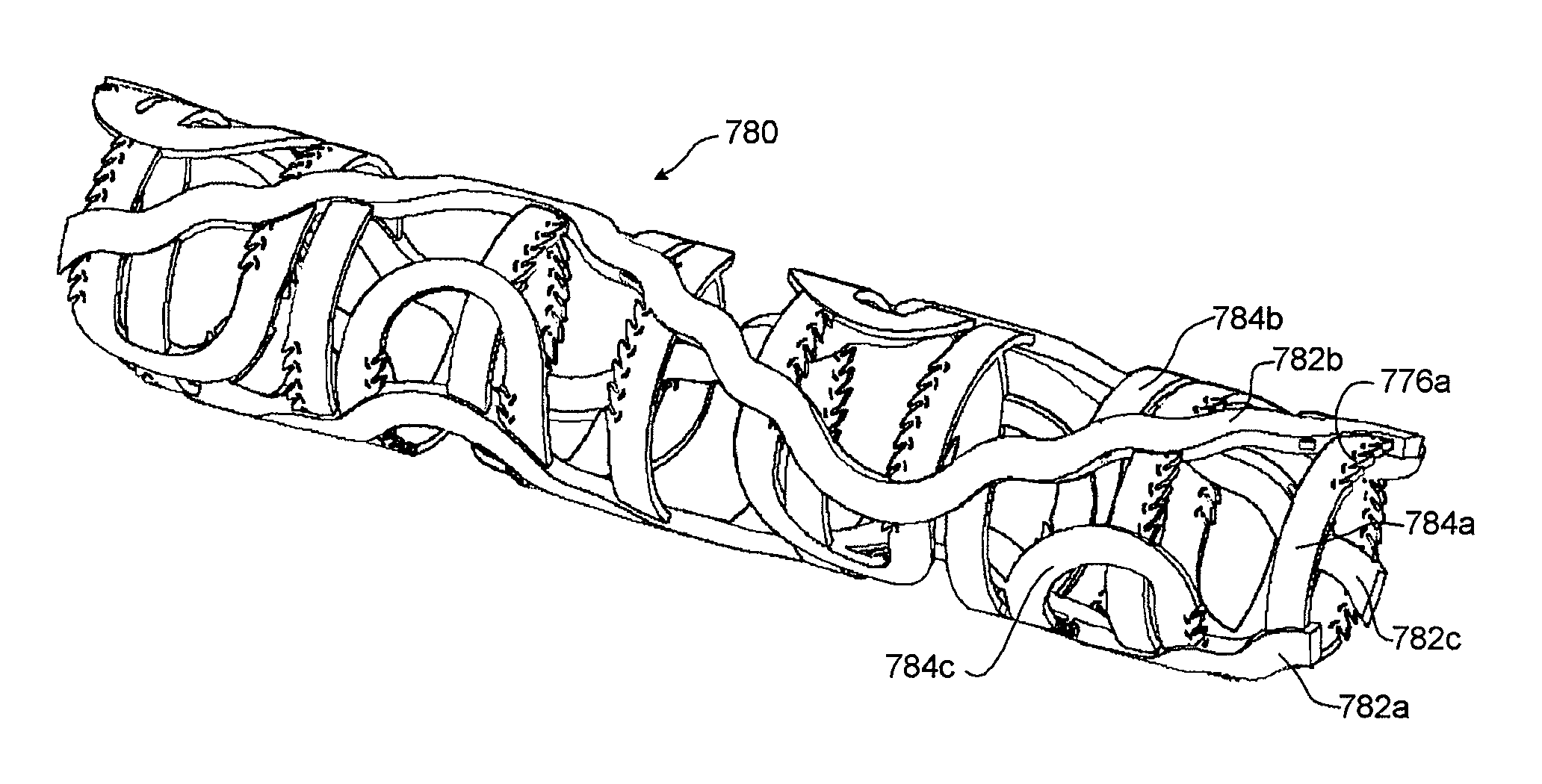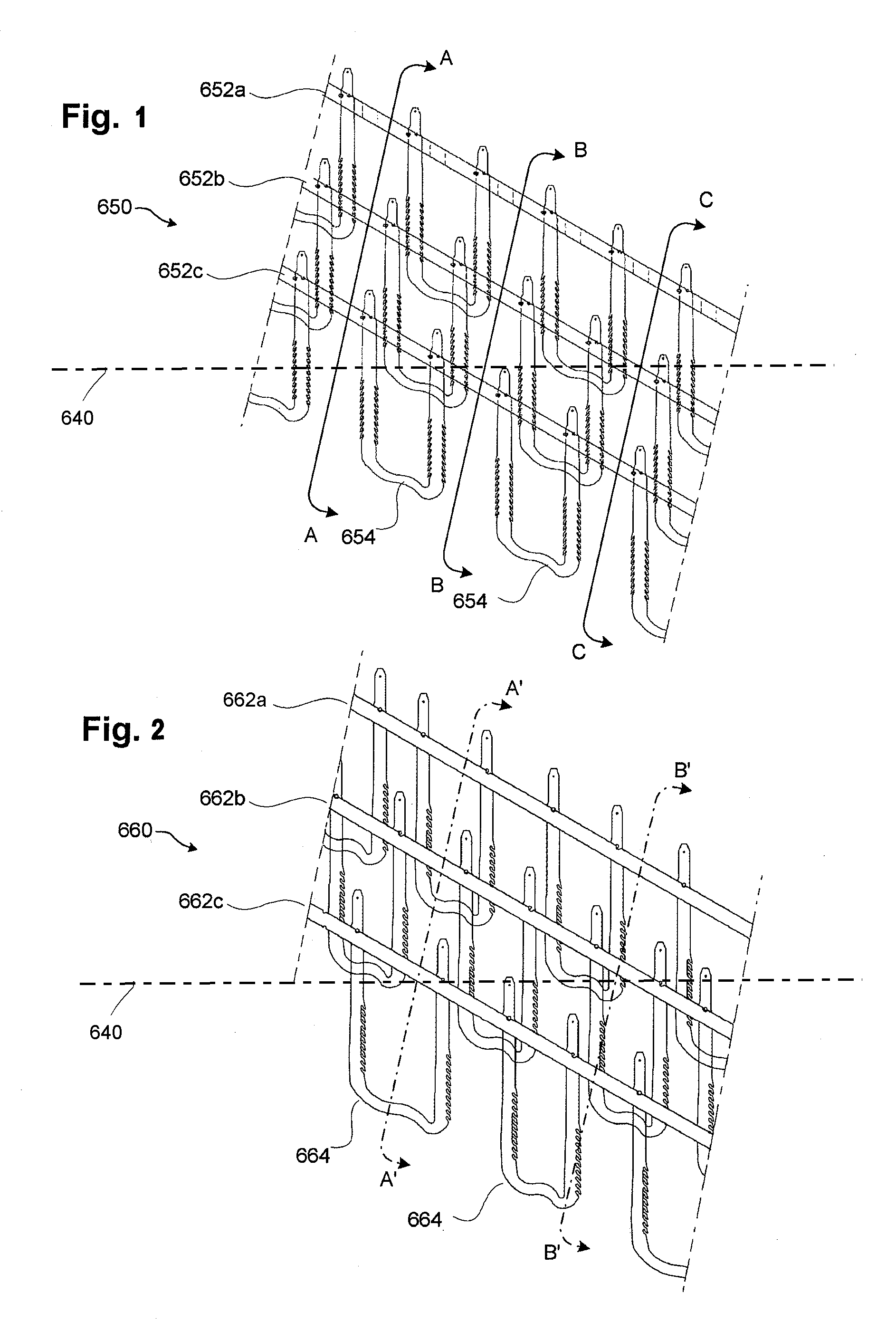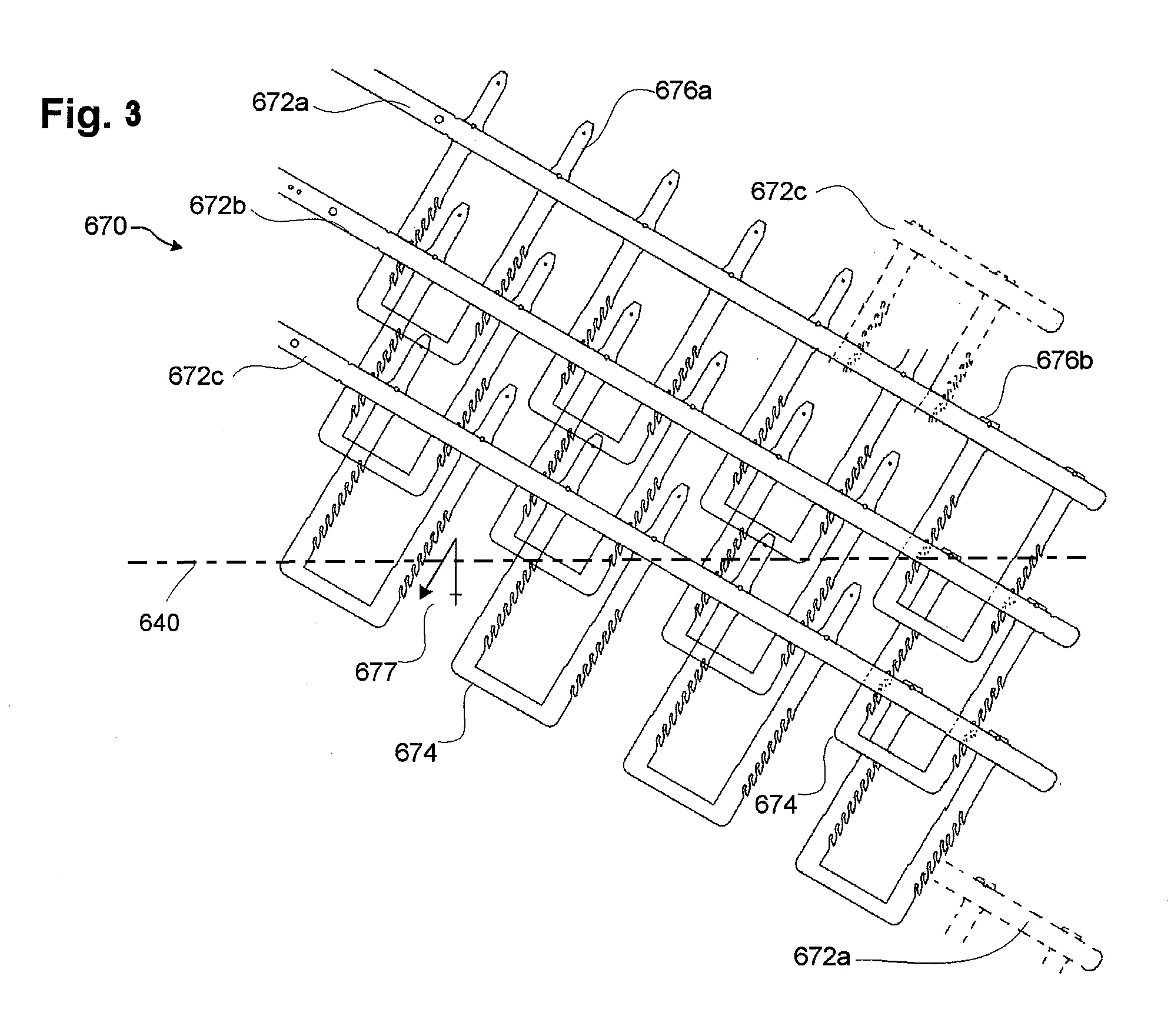Expandable slide and lock stent
a technology of stents and slides, applied in the field of expandable medical implants, can solve the problems of mechanical and vasodynamic limitations of stents, limitations related to deployment, and limitations related to vasodynamic capabilities
- Summary
- Abstract
- Description
- Claims
- Application Information
AI Technical Summary
Benefits of technology
Problems solved by technology
Method used
Image
Examples
examples
[0132]FIGS. 1-20D illustrate examples of stent embodiments having aspects of the embodiments disclosed herein. For clarity of the stent structure, certain of these figures illustrate various stent embodiments in a flat (e.g., unrolled) state. It should be understood, however, that such for delivery and / or implantation in a vascular structure, such embodiments can be rolled to form a tubular member. Although parts of the stent may have been illustrated as being on opposite sides of the stent (see, e.g., FIG. 9A, elements 732a and 735) for clarity, in the rolled state such elements can be slidingly engaged (see, e.g., FIG. 9C). Various figures include a representation of a longitudinal axis 640 of a stent if formed into a tubular member. The longitudinal axis 640 can provide a frame of reference in measuring relative angles and orientations of components of the stents disclosed herein. However, the longitudinal axis 640 may not in all figures represent a center axis of the stent, but ...
PUM
| Property | Measurement | Unit |
|---|---|---|
| angle | aaaaa | aaaaa |
| angle | aaaaa | aaaaa |
| slot angle | aaaaa | aaaaa |
Abstract
Description
Claims
Application Information
 Login to View More
Login to View More - R&D
- Intellectual Property
- Life Sciences
- Materials
- Tech Scout
- Unparalleled Data Quality
- Higher Quality Content
- 60% Fewer Hallucinations
Browse by: Latest US Patents, China's latest patents, Technical Efficacy Thesaurus, Application Domain, Technology Topic, Popular Technical Reports.
© 2025 PatSnap. All rights reserved.Legal|Privacy policy|Modern Slavery Act Transparency Statement|Sitemap|About US| Contact US: help@patsnap.com



